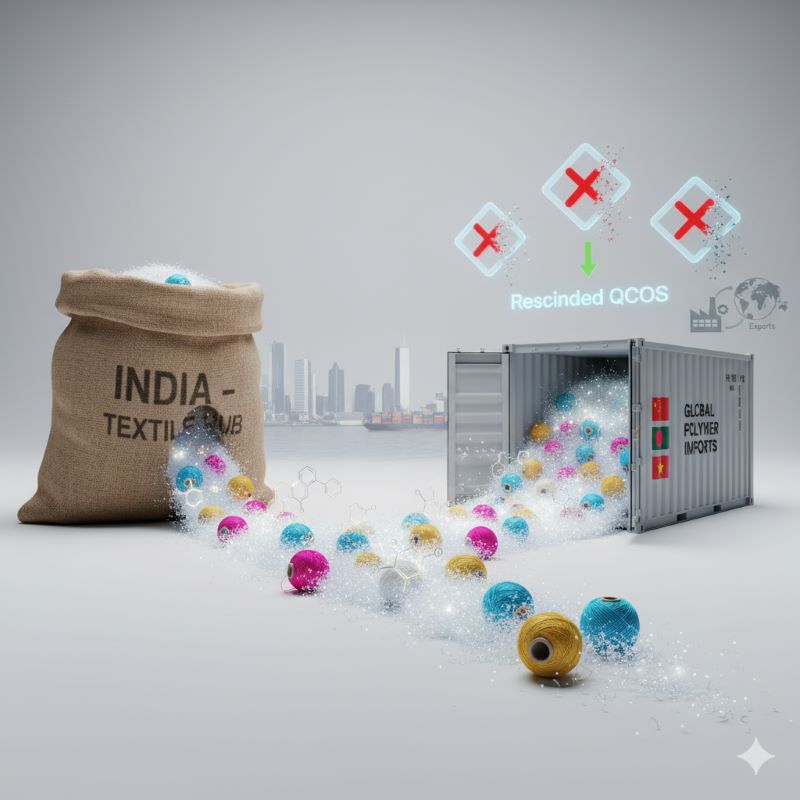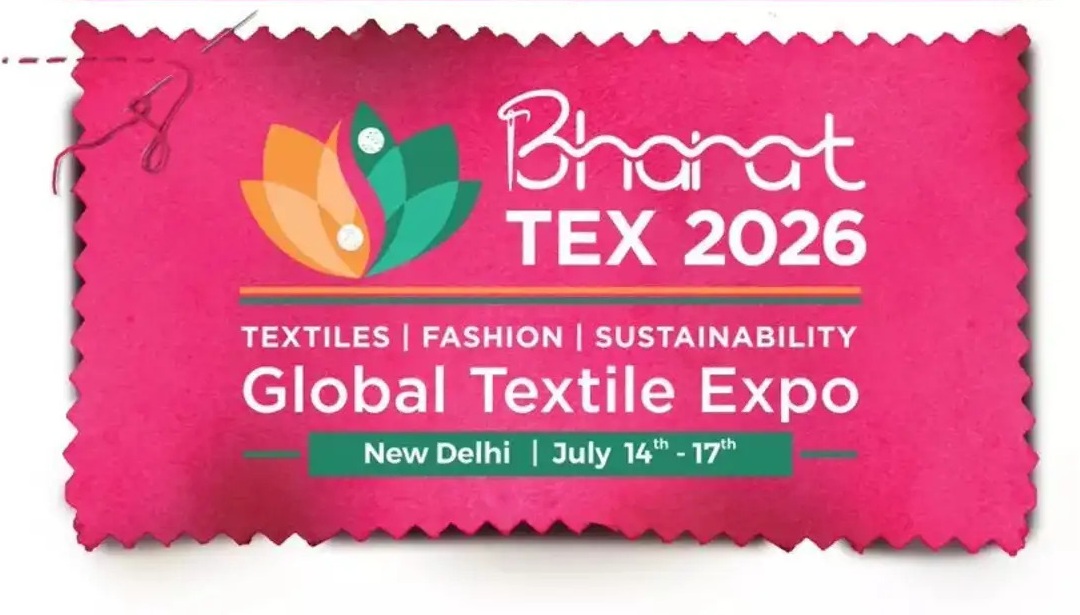FW
"Russia is the one of the largest market for Turkish exports. The main item of exports to Russia is textiles, which has decreased due to this political turmoil. Although textiles were not formally included in the list, shipments of Turkish textiles have been blocked at the Russian border since November. A few shipments that manage to make it past the Federal Customs Service of Russia undergo long inspections that result in significant delivery delays."
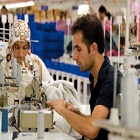
The unhealthy relationship between Turkey and Russia may have a deep impact on Turkish economy. Recent reports indicate that Russia had mounted sanctions against a number of Turkish industries mainly agriculture and tourism, but the Russian distributors and national suppliers expect this sanction to place a ban on textile and apparels as well, which is one of the major sectors for the Turkish economy (World Textile Information Network-WTIN).
Border controls tough for Turkish exports
Russia is the one of the largest market for Turkish exports. The main item of exports to Russia is textiles, which has decreased due to this political turmoil. Although textiles were not formally included in the list, shipments of Turkish textiles have been blocked at the Russian border since November. A few shipments that manage to make it past the Federal Customs Service of Russia undergo long inspections that result in significant delivery delays.

As per data, at the end of Q3 of 2015, Turkey's share in Russian imports was 11 per cent for fabrics made from chemical fibers and threads; more than 40 per cent for warp-knit fabrics; and about 25 per cent for yarns made from synthetic and artificial fibers. Finished products make up the majority of Turkish textile imports to Russia, while raw materials amount to roughly 30 per cent of the total import volume.
Experts say that Russian textile manufacturers still don't have the capacities to substitute for Turkish imports. Though, Russia will be the main short term loser on account of its ban on imports of some Turkish items. In the longer term, Turkey will lose a valuable export market in Russia, a leading destination for Turkish products.
Opportunities for Southeast Asian countries
The ongoing crisis in Russian clothing sector has created opportunities for Southeast Asian exporters. Man-Made Fiber Textiles has been witnessing a negative growth in the four segments namely – Yarn, Fabrics, Made-ups and Fiber. Some feel this is a good opportunity for many to enhance their exports to Russia. The Synthetic and Rayon Textiles Export Promotion (SRTEP) council in India is thinking of mounting a joint textile delegation to Russia.
Executive Director, Vanil Kumar reveals, “We may also explore the possibility of mounting a Joint Business Delegation to enhance MMF Textile Trade with Russia in the wake of the emerging situation. As a prelude, members who are interested to join may contact the council to help advance preparation for contacting the embassy. Already, hundred companies have registered.”
Bombay Dyeing’s standalone net loss totalled Rs 78.15 crores for the third quarter ended December 31, 2015, as against a standalone net loss of Rs 65.93 crores for the same period last fiscal.
The company’s net sales on a standalone basis plunged by 35.12 per cent during the period compared with the corresponding quarter last year. Its revenue from the textile segment totaled at Rs 48.69 crores during the period under review versus Rs 145.84 crores in the same period last fiscal. The revenue from the polyester segment dived to Rs 241.64 crores during the third quarter of the current fiscal as against Rs 330.63 crores in the year-ago period.
Established in 1879, Bombay Dyeing is the flagship company of the Wadia Group, involved primarily in the business of textiles. It is one of India’s largest producers of textiles.
Bombay Dyeing was established in 1879 as a small operation of Indian spun cotton yarn dip dyed by hand. It offers bed, bath, linen and lifestyle home furnishings. It is in 350 EBOs and 2,000 MBOs across India.
In textiles the company manufactures cotton suitings, polyester cotton suitings, shoe lining and duck fabrics, satin furnishings, yarn dyed fabrics, towels, table tops and napkins, satin bed sets.
Wool production is at a 70-year low globally but is still out-performing most other commodities. Global demand will drive what happens to prices in the next 12 months. Retail sales around the world are seeing slower growth rates.
The particular downturn in super fine-wool prices is because supply is increasing more than demand is. Once there is a bit of a pull back in production of super-fine wool, there will be a more sustainable balance and more sustainable prices.
China buys 70 per cent of Australia's wool clip, but there is increased demand in Europe. The rising European interest is acting as a counter to Chinese dominance in the market. A shift in the global, China-dominated demand for raw wool will push up wool prices everywhere.
The number of China's wool processing plants has dropped from 2,500 to 2,000 in five years. Sportswear has traditionally been dominated by synthetic fibers. However natural fibers like wool provide better advantages. Wool keeps a person cool when it's hot and warm when it's cold, something synthetic fibers have never succeeded in doing. Another problem synthetics haven’t solved is smell. Wool happens to be anti-microbial and anti-odor by nature. That gives it a huge head start over synthetics.
The Trans Pacific Partnership can pose problems for India’s textile and clothing business. For one, exporters from TPP member countries (of which India is not a member) will get preferential access to the US market. India’s apparel exports to the US have been sliding since 2010-11. To avail of duty preference, India will have to source yarn, fabrics and other inputs from TPP member countries.
So the option before Indian businesses would be to consider relocating to Vietnam (a TPP partner) and avail of the TPP duty advantage. But this proposition may not be feasible considering that labor is highly expensive in Vietnam compared to India.
To tide over the situation, India needs to explore export markets in emerging regions of Africa, South Asia, CIS and Latin America. The country will need to address the issue of inverted duties (a situation of higher duties on fiber and lower duties on apparel), expedite the free trade agreement with the Russian customs unions (it can be a big market in the coming years), make it mandatory for all least developed countries to use fabrics made in India if they want to export their apparels to India duty free and request the US to include apparel items in its GSP program.
Stäubli , the maker of manufacturer of high speed textile machinery has come up with third genearaont rotary dubbies. The company offers an extensive machinery range for weaving including shedding solutions for frame weaving machines (cam motions, electronic dobbies), high speed jacquard machines with customer-specific harnesses, automated weaving preparation machines (for drawing in and warp tying), carpet and technical textile weaving machines, knitting solutions and drive systems.
Stäubli constantly analyses customers’ needs and integrates solutions in the development of its new products. The LX jacquard machine is built with high-quality materials and designed to perform with utmost precision at very high speeds. It allows mills to weave sophisticated fabrics for virtually any application.
The third generation of Stäubli’s rotary dobbies improves performance and reliability aspects. The carpet systems illustrate technological advances such as the recently introduced magic shadow effect, the traditional carpet effect and other high density applications.
The Topmatic warp-tying machine designed for standard applications demonstrates high efficiency warp tying. There are also circular sock knitting machines, servo motors, electronic control solutions, input/output devices and related programming tools used mainly in the textile industry.
Stäubli is an innovative mechatronics solutions provider with three dedicated divisions: textile, connectors and robotics. It has a presence in 25 countries and agents in 50 countries around the world.
www.staubli.com/
Kariyappa, a farmer from Turakanadoni village in Raichur taluka, has filed a legal complaint with the Chief Judicial Magistrate, Raichur, against 15 Bt cotton seed companies, with regard to crop loss caused by pink-bollworm pest this year.
The accused companies are Nuziveedu Seeds, Kaveri Seeds, Shriram Bioseed Genetics India, JK Agri Genetics, Spriha Bio Sciences, Ganga Kaveri Seeds, Pravardhan Seeds, Rohini Seeds, Bayer Crop Science, Green Gold Agritech, Ajeet Seeds, Ankur Seeds (Ranebennur), Ankur Seeds (Nagpur), Monsanto India and Ganesh Hajare Seeds.
Pointing out that pamphlets containing claims made by Bt cotton seed companies that came with the seed packets clearly promised protection to crops from not only American, spotted and pink bollworms but also from Spodoptera and Semi-loopers The complainant said that Bt cotton crop was completely destroyed by pink-bollworm, contrary to the claims made.
The complainant has claimed that Bt cotton crop worth between Rs 400 crores and Rs 500 crores has been destroyed in the pest attack in Raichur district. He has also brought to the notice of the court that no action was taken against the seed companies despite repeated requests, though Joint Director of the Agriculture Department has issued notices to them. Kariyappa says taking advantage of illiteracy and poverty of farmers, the seed companies knowingly sold the seeds that were of no use and cheated them. The government should book criminal cases against the companies and initiate an inquiry. And has sought an enquiry by SP Police, Raichur, into the issue.
Bangladesh’s Jamuna Group is one of the largest vertically integrated companies in the country. It has large capacities across the value chain from spinning to garmenting and washing and is set to upscale its capacities across the chain. It has five spinning mills, a weaving capacity of 2.5 million yards per month and 50 lines for garmenting to produce 40,000 pieces a day.
The company manufactures women’s and men’s high fashion jeans, casual garments and dyed bottoms. Jamuna has already started the process of expansion with an additional 500 looms. With its strong and firm belief in sustainable fashion, Jamuna’s textile divisions have grown tremendously over the years. Today, the company works with buyers like Tesco, Primark, Walmart, Next, Mango.
Upbeat on the possibilities of growth over the next decade in denim, Jamuna is adding another 5,00,000 spindles, to be operational in eight months. This investment will position the company among the biggest spinning mills in Asia and give it the strength to not only work in huge volumes but also experiment at the spinning stage for innovative yarns for the mass market. The intent is to offer the state-of-the-art facility to fast fashion retailers who can take advantage of the quickest lead time offered by the vertically integrated manufacturing facility.
jamunagroup.com.bd/
"Despite an economic downturn, there has been a growing demand for fashion accessories in Europe. As per a market report by the Center for the Promotion of Imports from Developing Countries (CBI).Europe represents an attractive destination market for exporters of fashion accessories from developing countries. Fashion accessories have performed well in the European market, even during the economic crisis."
 Despite an economic downturn, there has been a growing demand for fashion accessories in Europe. As per a market report by the Center for the Promotion of Imports from Developing Countries (CBI).Europe represents an attractive destination market for exporters of fashion accessories from developing countries. Fashion accessories have performed well in the European market, even during the economic crisis.
Despite an economic downturn, there has been a growing demand for fashion accessories in Europe. As per a market report by the Center for the Promotion of Imports from Developing Countries (CBI).Europe represents an attractive destination market for exporters of fashion accessories from developing countries. Fashion accessories have performed well in the European market, even during the economic crisis.
Europe sees good demand for accessories
The report identified the United Kingdom and Italy as potential markets for this segment, and European countries in general are favorable markets. It defined fashion accessories as gloves mittens, mitts, neckwear, carrying products, such as bags, and other accessories, such as handkerchiefs, belts, hats and caps. With 20 percent, fashion accessories represent the second biggest segment within apparel, together with men's woven at 20 percent after women's woven at 25 percent.

The CBI market report says accessories for men are one of the most potential growing segments in the European market for fashion accessories. Although the women’s segment is still the largest, the men’s segment has good potential,. This is due to the growing attention to appearance and details of the European metropolitan man.
To successfully export fashion accessories to the European market, exporters are advised to incorporate sustainability measures and transparency at all levels of the production chain, making it part of their branding and point of differentiation.
This includes company's performance on responsible water use, energy consumption and chemicals, which will help you, score over others as a sustainable and long term player in the European market. Likewise, exporters can innovate for the European market by combining the introduction of new materials or ideally, recycled materials with innovative designs for fashion accessories.
The market report also emphasizes on e-commerce as a viable option as most European consumers will explore that channel in order to find a broader offer of fashion accessory products. It underscored the growing use of social media by European brands, as this makes it easier for developing country exporters to get familiar with their requirements, directions, preferences and style.
Social media are used by European brands to connect with their customers and increase brand awareness, but the same messages can give exporters good ideas about what is important to them," the report further said.
"The fair promises to be different from other regular trade fairs in Japan aiming at delivering an assurance of success for its participants. It’s not just about exhibiting goods but would help clients with the process of entering into the Japanese market. The approach adopted by the India Trade Fair is entirely proactive and will help participants to cope with all the major hurdles that Indian apparel makers face in Japan."
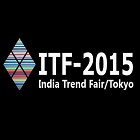
Japan India Industry Promotion Association (JIIPA), a non- profit organization in Japan will be organizing the 2nd India Trend Fair in Tokyo from September 27-29, 2016 at Belle Salle Shibuya Garden a popular fashion center for holding trade and fashion shows in Tokyo. The show promises to give an opportunity to exporters to showcase their products. India Trend Fair aims to be an exclusive business networking event, which gives an opportunity to exporters to showcase their products, and supply capabilities of value added products with special emphasis on the products designed to suit Japanese fashion trends and requirements.
Promoting India in Japan
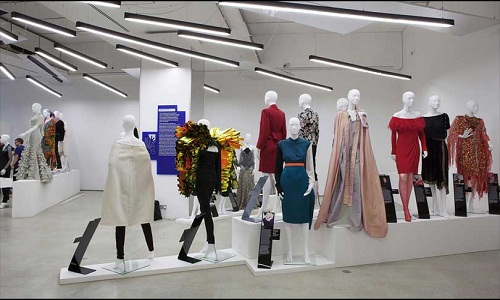
The first India Trend Fair held at Belle Salle Shibuya Garden in October 2015 was a success and attracted 2,404 professional visitors. The participants were from a cross-section of companies, including a few leading ones in Japan like Mitsukoshi-Isetan, Isetan, Tokyo-hands, Takashimaya, Marubeni, Daimaru, Ieon, Sanyo, Seibu, Tobu, Keio, Sogo, 7-Eleven, 7 & I Holding, Marui, Ito-Yokado, Nitori, Teijin, Tore, Adventure International, Onward, Asahi Kasei Trading Service amongst others.
The product profile at India Trend Fair Tokyo encompasses: garments including woven and knitted garments for women wear, menswear, baby/kids wear, inner cloths, casual wear, high fashion garment, occasional wear, sports wear. Home Furnishings & Handicrafts: which includes made ups, cushion covers, floor mats, carpet, rugs, table ware, Bed linen/bed covers/spreads, interior goods, decorative articles and gift wear and ethnic crafts. jewelry & fashion accessories, bags & shoes, handicrafts etc
The fair promises to be different from other regular trade fairs in Japan aiming at delivering an assurance of success for its participants. It’s not just about exhibiting goods but would help clients with the process of entering into the Japanese market. The approach adopted by the India Trade Fair is entirely proactive and will help participants to cope with all the major hurdles that Indian apparel makers face in Japan.
Apparel Export Promotion Council (AEPC), The Indian Silk Export Promotion Council (ISEPC), and The Handloom Export Promotion Council (HEPC) proposal is under consideration to Ministry of Commerce for MAI for participating in India Trend Fair, Tokyo.
The 23rd Hong Kong Fashion Week for Spring/Summer will be held from July 4-7 2016 at the Hong Kong Convention and Exhibition Centre. In this edition, women's wear and knitwear will be the debut zones to optimize buyers' sourcing selection. The premium fair is expecting around 1,200 worldwide exhibitors. Previous edition attracted 16,000 buyers from 65 countries and regions.
Under the four major categories of apparel, upstream supplies, fashion accessories and technology and business matching, zoning will be fine-tuned to footwear, leggings & socks, eyewear, hair accessories & headwear, belts and ties and embroidery & sewing supplies to offer one stop platform to best catering buyers' demand.
Other popular zones will return with splendor, including active wear & sportswear, intimate & swim wear, children's wear, and men in Style, denim arcade and fabrics & yarn. Qualified exhibitors are awarded a "Green Solution Suppliers" insignia on their booth fascia to address the growing demand on eco-friendly apparel.
Chinese mainland market continues to be a driving force for Hong Kong Fashion industry. As of February 2016, Hong Kong's total exports of clothing & clothing accessories to mainland and Macau rose 2.2 per cent and 8.8 per cent respectively to $1.42 billion and $504 million. According to HKTDC's research, mainland consumers generally find Hong Kong clothing brands trendsetting, fashionable and tasteful. They are willing to pay an average premium of 36 per cent to purchase Hong Kong branded garments. Hong Kong Fashion Week for Spring/Summer serves an effective springboard for traders to expand their business in mainland and Asian market.
HKTDC offers business matching services, networking receptions, seminars and buyer forums during fair to provide a perfect platform for industry players to exchange market intelligence and explore new business opportunities.


